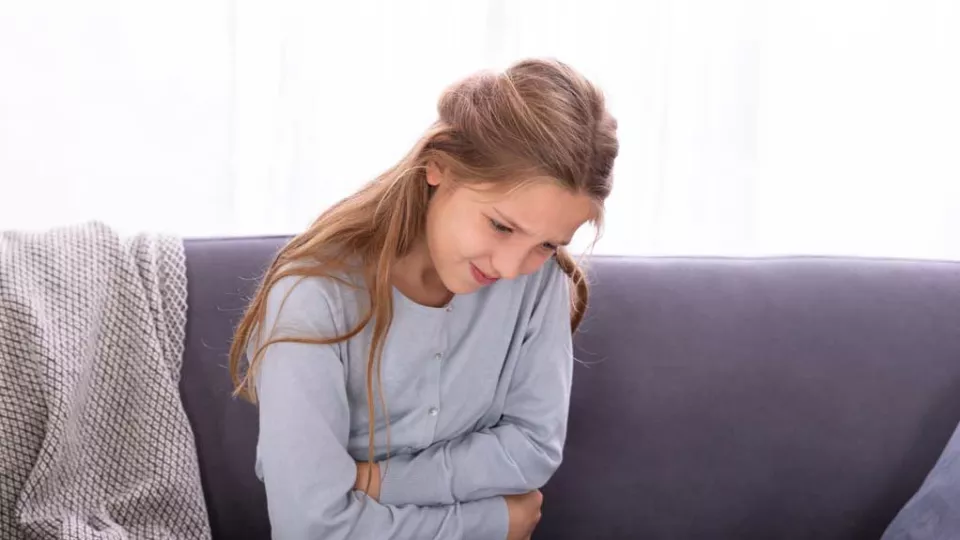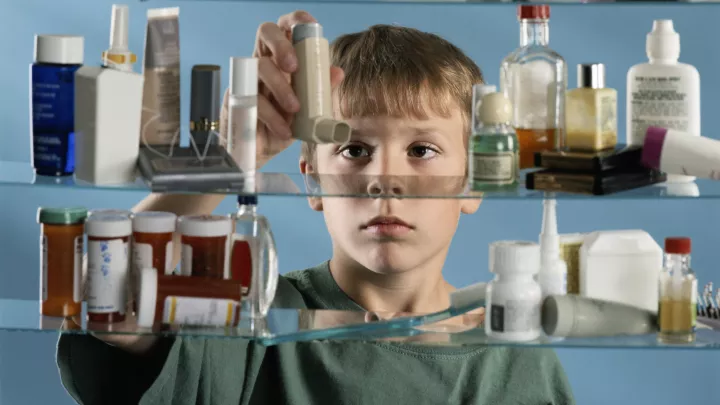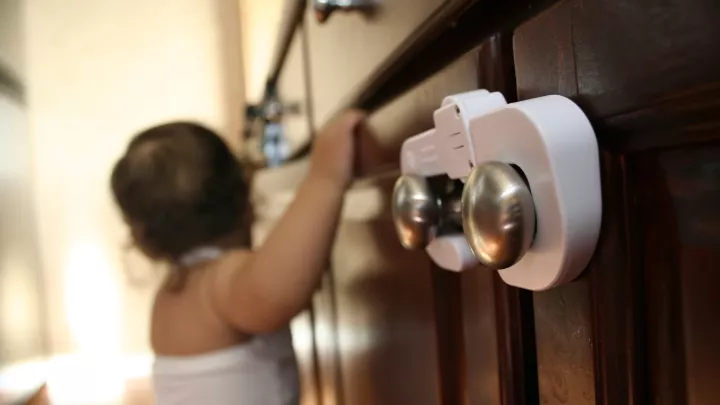
Seven Safeguards: How to Protect Your Kids From Ingesting Poison
KEY TAKEAWAYS:
- All ingestible products should be kept far from of a child’s reach.
- Toys that are made of lead or run on coin batteries pose a risk.
- Have the number to Poison Control on hand and visible in case of emergency.
There are just too many ways children can poison themselves by getting into things that are intended only for their parents. Medications, cleaning supplies, edible marijuana and a host of other ingestible products can turn what should be the safest environment for a child—the home—into one with danger lurking on every countertop. (First tip: Leave none of the aforementioned things on countertops.)
We enlisted advice from Helen Arbogast, DrPH, MPH, Manager of the Children’s Hospital Los Angeles Injury Prevention Program, to learn what parents can do preemptively to keep their kids safe from consuming any dangerous substances that may be taking up space in a cabinet or drawer.
1. Store them up, up, and way away
Dr. Arbogast says the first rule of poison prevention is to keep any hazardous substances tucked away in spaces that children can’t reach, which generally means somewhere high up. Those tucked-away places should also be secured, Dr. Arbogast says, “so children can't access them, even if they can physically reach them.” If needed, CHLA can give families childproof cabinet locks.
2. Use the original containers
Laundry packets, household supplies, and medicines should be kept in their original, childproof packaging, which provides another barrier against an accidental poisoning should one of these products get into your child’s hands. Many adults tend to move their daily prescription pills into a Sunday-through-Saturday pill box. Dr. Arbogast advises against this because the pill box is not secured. “If an adult can easily pop it open, then a child can too,” she says.
3. Remove your expired meds
Medications come with their own series of recommendations from the Centers for Disease Control and Prevention (CDC), including to follow all label directions and warnings when giving medicines to kids. The instruction that Dr. Arbogast emphasizes is to get rid of expired medications, which are of no use since they’re effectiveness has run out. “Sometimes we just leave medication around because we don't know where to toss it,” Dr. Arbogast says. “Make sure you throw it out so it's not in the house.”
However, Dr. Arbogast says medication needs to be disposed of responsibly, rather than dumped thoughtlessly into a garbage bin. She directs people to the Food and Drug Administration’s explanation of the proper ways to get rid of unused medications, including flushing them (if they are on the FDA’s “flush list”) or returning them to the pharmacy.

4. Educate extended family and friends
Dr. Arbogast says to make sure that all family members, friends, and babysitters who are providing child care for you are aware of the potential for poison ingestion and are practicing the same principles of prevention, keeping all toxic substances locked away and out of kids’ reach.
5. Get the lead out
Lead is a naturally occurring metal that poses a significant health threat to kids, having been associated with learning difficulties, developmental delays, and behavioral issues, according to the CDC. The agency says small children are most commonly exposed to lead through “hand-to-mouth behavior”—as an example, ingesting lead dust by putting toys or dirt in their mouths.
Dr. Arbogast says one key way to preventing lead contamination is to wash your children’s hands after they have returned from playing outdoors—and also wash their toys regularly. In the home, lead-based paint tends to peel or crack over time, producing dust that children inhale. Remove any peeling paint you find. If you’re concerned that your child has been exposed to lead, a health care provider can order a blood test to make that determination.
6. Beware of batteries
Small children and batteries should be kept apart, which means being aware of any products with batteries not kept behind a screw closure. If you can just pop a lid to get to the batteries, then that toy needs to be put away when not in use. The U.S. Consumer Product Safety Commission says special attention should be paid to button cell or coin batteries. Those can be swallowed easily, and so should be kept entirely inaccessible to small kids.
7. Have the number to Poison Control visible
Even with all these safeguards in practice, accidents happen. Put the number to California Poison Control, 1-800-222-1222, on or near every home telephone. You can reach Poison Control 24 hours a day, seven days a week.
“Everybody knows 911,” Dr. Arbogast says, “but not everybody knows the California Poison Control number.”
Dr. Arbogast says to call immediately if you suspect your child has swallowed something poisonous. Don’t wait for an adverse reaction to confirm it because reactions will vary by the toxin consumed.
“Some may cause vomiting; some may cause lethargy, where the kid is nonresponsive; some might cause a stomach illness,” she says. “If you think they ingested edibles, that's not going to have the same kind of reaction as prescription medication. We can't say, ‘If they look like this, do this.’”
Stay engaged, not fearful
In the aftermath of a poison ingestion, Dr. Arbogast says parents take it hard. More often than not, they weren’t negligent, but merely made the wrong assumption or had a momentary lapse of attention.
“They just didn't think their child would be interested, or go into that room by themselves, or open up a container. They're like, ‘Oh my god, I wish I would've thought about it. I wish I would have put [the substance] up. I wish I would have closed the door.’”
Dr. Arbogast says parents don’t have to be obsessive or fretful, just stay smart and engaged, as they typically are. “We just want them to be thinking about their child's safety at all times.”


